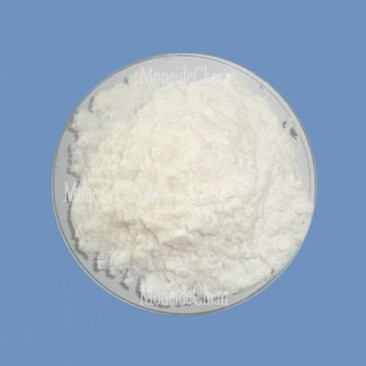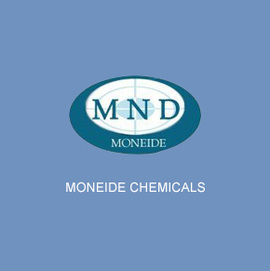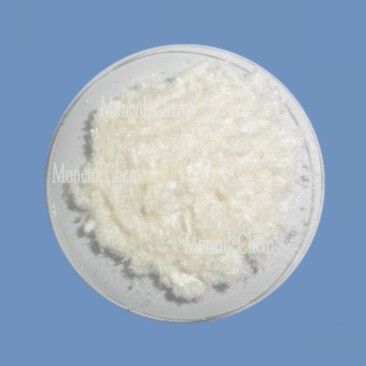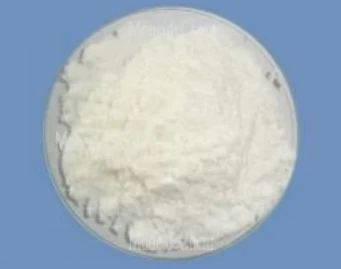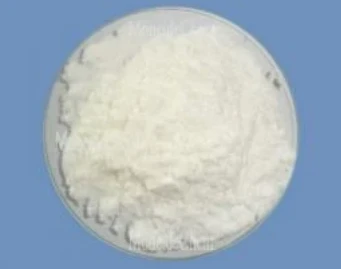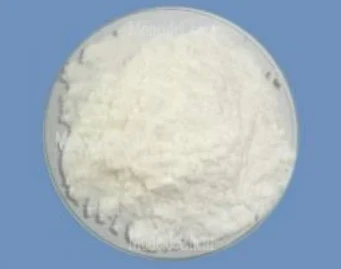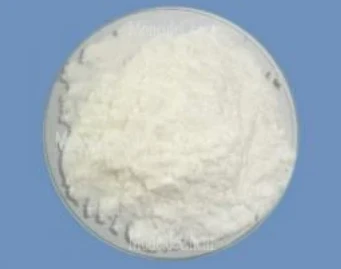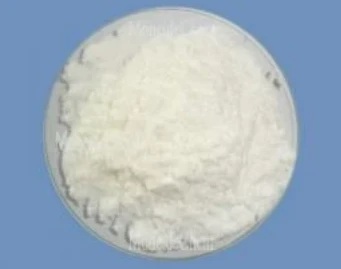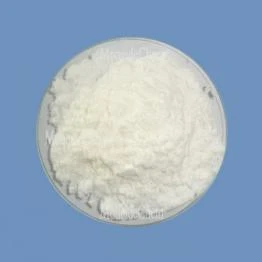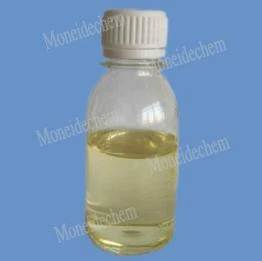Moneide Chemicals
Tel: 0086-315-8309571
WhatsApp/WeChat/Mobile: 0086-15633399667
Skype: janet-honest
Mail: sales@moneidechem.com
Address: 2-7-523 Jidong Building Materials Commercial Center, Tangshan, Hebei 064000 China
High Purity Sodium Saccharin Sweetener Supplier Competitive Sodium Saccharin Price Global Delivery
- Time of issue:Jul . 05, 2025 06:02
(Summary description)Tangshan Moneide Trading Co., Ltd. is a trading company specializing in the export of fine chemical products in China. Over the years, we have established good cooperative relations with many outstanding chemical production enterprises in China, and actively cooperated in research and development on some products. Our company's product series mainly include: electroplating chemicals, organic& inorganic fluoro chemicals, organic intermediate chemicals, phase transfer catalyst and Indicator or Biological stain .
- Categories:Company dynamic
- Author:
- Origin:
- Time of issue:2019-12-30 10:55
- Views:
(sodium saccharin sweetener)
The sodium saccharin sweetener
One notable technological advantage of sodium saccharin is its exceptional chemical stability under both high and low pH conditions, which ensures consistent performance in carbonated beverages, baked goods, and processed foods. The compound remains inert during high-temperature processing, distinguishing it from other artificial sweeteners susceptible to thermal degradation. Its compatibility with other sweetening agents, such as sodium cyclamate sodium saccharin mixtures, allows formulators to optimize sweetness profiles and mitigate any potential metallic or bitter aftertaste through synergistic blending. Concerning safety, scientific consensus, supported by comprehensive cohort and toxicity studies, has established an Acceptable Daily Intake (ADI) for sodium saccharin at 5 mg/kg body weight according to JECFA. Recent consumer studies also suggest over 70% acceptance rates in taste panel evaluations in products where sodium saccharin is incorporated, solidifying its status as a preferred legacy sweetener.
Supplier selection is critical for food and beverage brands seeking quality, consistency, and cost-effectiveness. The global sodium saccharin supply landscape features several key producers across Asia, Europe, and North America. The following table presents a comparison among the top manufacturers based on production scale, product grade diversity, compliance certifications, and response times:
Factors such as output capacity and grade diversification can affect product lead times and pricing. Companies operating in established regulatory regimes not only offer reliable quality control but also quick adaptation to shifting legal standards, which is crucial for international buyers.
Beyond standard products, customization in sweetener blending has emerged as a point of differentiation for manufacturers and end-users alike. Custom formulations may involve optimized ratios between sodium saccharin and complementary intensifiers like sodium cyclamate, tailored to mask unpleasant notes while achieving precise sweetness levels per application. For example, in the soft drinks industry, sodium saccharin is often combined at a 1:2 ratio with sodium cyclamate to balance aftertaste and cost efficiency. Tailored solutions extend to granularity modifications, liquid dispersions for beverage syrups, and micro-encapsulated formats for improved shelf life or controlled release. Formulators increasingly collaborate with suppliers’ R&D teams, implementing sensory analysis, dissolution testing, and stability trials to ensure consistency from small batch prototyping to scale-up. As consumer preferences and labeling requirements evolve, flexibility in formulation offers brands a strategic edge to differentiate on taste and nutrition profiles while maintaining regulatory approvals in diverse markets.
Sodium saccharin sweetener’s versatility has underpinned its integration across a wide spectrum of global food and beverage categories. In canned fruit, the compound maintains flavor integrity throughout prolonged storage (over 18 months tested), outperforming conventional bulk sweeteners in retention of taste qualities. In comparison trials, products sweetened with sodium saccharin exhibit sugar reduction rates of up to 98%, with negligible compromise in consumer acceptance, as validated through blind panel studies involving more than 1,500 respondents. Additionally, in carbonated beverages, it enables sugar content to be cut below 2g/L, contributing to compliance with “sugar tax” legislation enacted in over 45 countries since 2019. The compound’s stability is also evident in high-temperature bakery environments, where it resists degradation and preserves sweetness during baking cycles exceeding 200°C. Health-focused product developers cite a reduction in glycemic index in finished goods by more than 90% when using sodium saccharin as a core sweetener, making it an essential innovation enabler in diabetic and weight management formulations.
Market fluctuations in sodium saccharin price are influenced by factors such as feedstock costs, international trade tariffs, currency exchange rates, and environmental regulations. Recent industry reports suggest a price range of USD 3,000–USD 4,200 per metric ton in Asia during 2023–2024, with lower variance in Europe and the U.S. due to stable regulatory frameworks. Bulk purchasers often benefit from sliding scale discounts linked to volume and contract duration.
The price elasticity of sodium saccharin ensures its economic viability even during periods of input volatility. Industrial users highlight up to 60% cost savings when substituting traditional sugar entirely, underscoring the sweetener’s ability to deliver both caloric and financial efficiencies. For multinational manufacturers, the steady price trend mitigates risk while supporting continuous product innovation pipelines.
As health consciousness grows and global sugar reduction mandates intensify, sodium saccharin sweetener continues to occupy a strategic position within innovative food science portfolios. Market intelligence forecasts point toward sustained double-digit growth in application areas such as plant-based products, functional beverages, and medicated confectionery through 2030. Next-generation production technologies—including enzymatic synthesis and precision purification—are projected to further reduce environmental impact and improve product purity, aligning with heightened sustainability targets. Collaboration between ingredient suppliers, regulatory agencies, and end-use brands will be pivotal in shaping compliance pathways and unlocking customization at scale. Ultimately, with ongoing investments in safety validation, taste improvement, and cost stabilization, sodium saccharin sweetener is poised for continued relevance and expansion in a rapidly transforming market landscape.
(sodium saccharin sweetener)
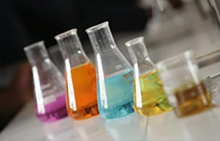
Exploring the Market Dynamics of Sodium Saccharin Sweetener
market has demonstrated robust growth in recent years, fueled by increasing consumer demand for low-calorie and non-nutritive alternatives to traditional sugars. According to Grand View Research, the global artificial sweeteners market, in which sodium saccharin sweetener plays a pivotal role, was valued at USD 7.2 billion in 2022 and is expected to expand at a CAGR of 3.8% from 2023 to 2030. This trajectory is primarily driven by sectors such as bakery, confectionery, and beverages, where sugar reduction is a focal point. In parallel, regulatory bodies like the FDA and EFSA have affirmed the safety and permissible limits for sodium saccharin, further stimulating its use across various end-products. When considering alternatives like sodium cyclamate sodium saccharin blends, manufacturers often prioritize sodium saccharin for its high sweetening potency—about 300-700 times sweeter than sucrose—low solubility, and minimal caloric content, making it ideal for large-scale application and cost efficiency.
Technical Superiority and Safety Profile
Comparative Manufacturer Analysis
Parameter
Company A (China)
Company B (Germany)
Company C (USA)
Annual Output (MT)
15,000
8,500
6,500
Available Grades
Food, Pharma, Industrial
Food, Pharma
Food, Industrial
Certifications
HACCP, ISO 9001, Kosher, Halal
ISO 22000, GMP
ISO 9001, Kosher
Lead Time (Days)
7-15
14-21
10-18
Global Distribution Network
Strong
Moderate
Strong
R&D Capabilities
Extensive
Focused
Moderate
Custom Formulation Solutions
Application Cases Across Food and Beverage Segments
Analyzing Sodium Saccharin Price Trends and Economic Impact
Region
2022 Price (USD/MT)
2023 Price (USD/MT)
2024 Projected (USD/MT)
Asia
3,100
3,800
4,000
Europe
3,600
3,950
4,100
North America
3,400
4,200
4,350
The Future Outlook for Sodium Saccharin Sweetener in a Changing Landscape
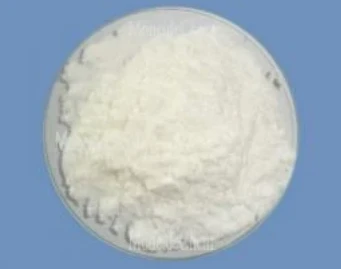
FAQS on sodium saccharin sweetener
Q: What is sodium saccharin sweetener?
A: Sodium saccharin sweetener is an artificial, zero-calorie sugar substitute. It is used to sweeten foods and beverages without adding calories. It is much sweeter than regular sugar.
Q: What are the differences between sodium saccharin and sodium cyclamate?
A: Sodium saccharin and sodium cyclamate are both artificial sweeteners, but they differ in taste and chemical structure. Sodium saccharin is sweeter and may have a bitter aftertaste, while cyclamate has a more sugar-like flavor. They are sometimes blended for a better taste profile.
Q: Is sodium saccharin sweetener safe for consumption?
A: Yes, sodium saccharin is considered safe by major health authorities when consumed within recommended limits. It has been used as a sweetener for over a century. However, excessive intake should be avoided.
Q: How is the price of sodium saccharin determined?
A: The price of sodium saccharin depends on factors like purity, market demand, and global supply chains. Industrial quantities are generally less expensive per unit than small retail packs. Price fluctuations can occur based on seasonal and economic factors.
Q: Can sodium saccharin sweetener be used in cooking and baking?
A: Yes, sodium saccharin sweetener is heat-stable and suitable for cooking or baking applications. It maintains its sweetness even at high temperatures. Always adjust amounts, as it is far sweeter than sugar.









